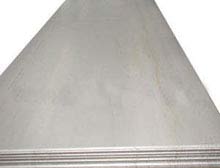- : 0086-18317160019
- : [email protected]
- : ROOM 101 NO.16, 6TH BUILDING, 9TH LANE,GUANGYI ROAD,ZHUQIAO TOWN,PUDONG NEW AREA,SHANGHAI
- API 5CT N80 casing and tubing pipe
- API 5CT K55 casing and tubing pipe
- API 5CT J55 casing and tubing pipe
- EN10028-2 16Mo3 Boiler and Pressure Vessel steel Plate Notch impact energy
- EN10028-2 P265GH Pressure vessels steel equivalents
- EN 10210 S355J2H low alloy carbon structural steel
- EN 10210 S355J0H steel hollow materials
- GB/T 18248 34CrMo4
- GB/T 18248 35CrMo alloy steel
- 30CrMo steel Heat treatment, 30CrMo steel tube/pipe
410 stainless steel plate

410 stainless steel plate:
410 stainless steel plate, 410 stainless steel industrial plate, 410 stainless medium steel plate,410 stainless steel mirror panels ,and 410 stainless steel wire drawing board, 410 stainless steel surface 2B plate, 410 stainless steel high temperature resistance plate, 410 high hardness stainless steel
Type 410 is officially a stainless steel but characteristically the material is actually a compromise of high carbon steel alloy (which promotes wear resistance) with chromium stainless steel (which promotes corrosion resistance).
410 stainless steel has good corrosion resistance and mechanical processing, general used for blade type, valve type.This steel is ideal for use in the manufacture of highly stressed parts found in a variety of industries including petrochemical, automotive and power generation.
410 stainless steel plate Chemical Composition :
| C % |
Si % |
Mn % |
P % |
S % |
Cr % |
Ni % |
|
≤ 0.15 |
≤ 1.0 |
≤1.00 |
≤0.04 |
≤0.03 |
11.5-13.5 |
≤ 0.75 |
410 stainless steel heat treatment: solution treatment (℃) 800-9000 slow cooling or 750 fast cooling ; the highest amount of Ta 0.10%.
410 stainless steel plate has similar resist general corrosion with an unstable nickel-chromium alloy 304 ,mainly used for high temperature applications, high-temperature applications require materials with a strong allergy resistance.
Martensitic stainless steels are optimised for high hardness, and other properties are to some degree compromised. Fabrication must be by methods that allow for poor weldability and usually the need for a final heat treatment. Corrosion resistance of the martensitic grades is lower than that of the common austenitic grades, and their useful operating temperature range is limited by their loss of ductility at sub-zero temperatures and loss of strength by over-tempering at elevated temperatures.